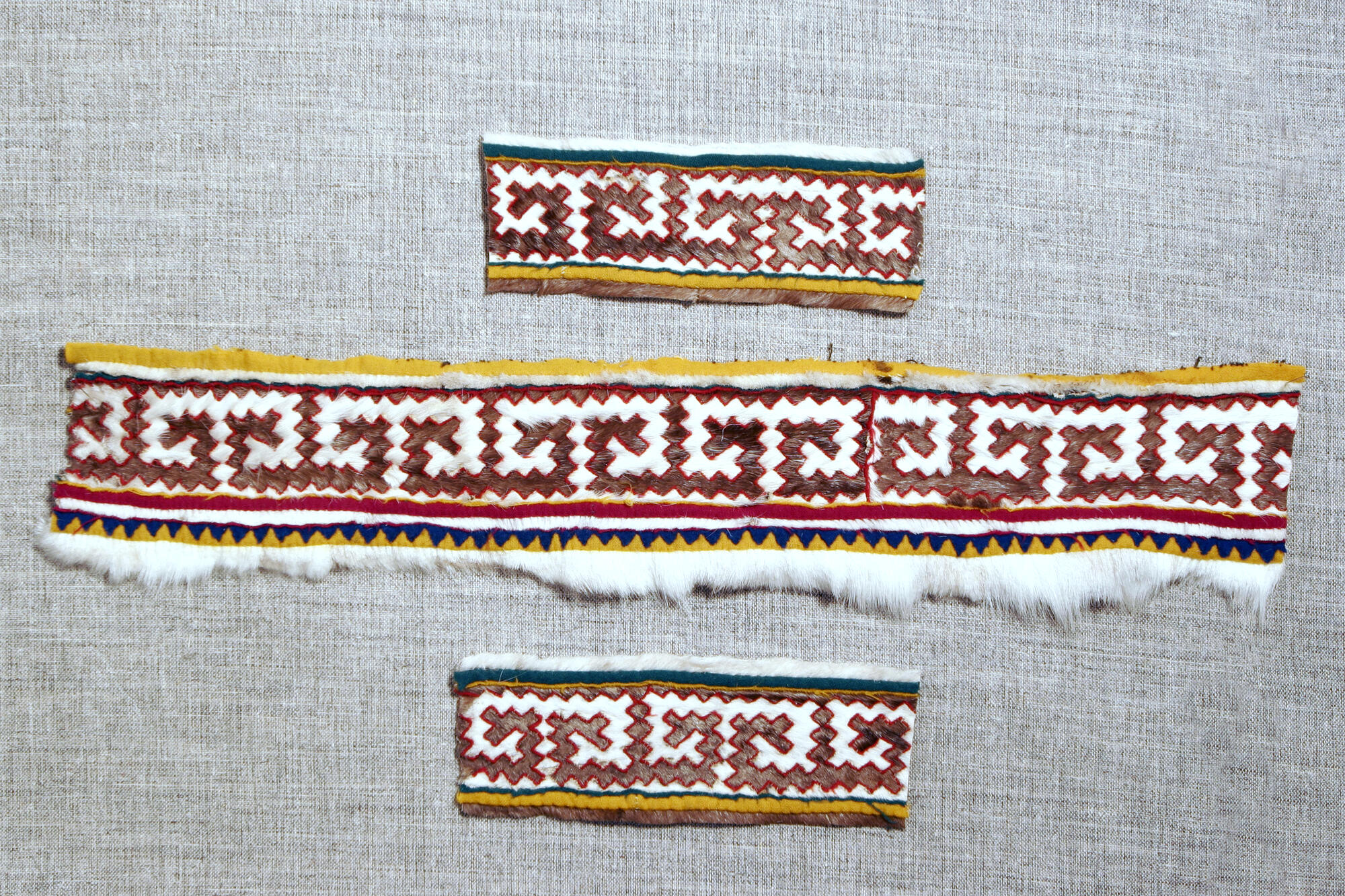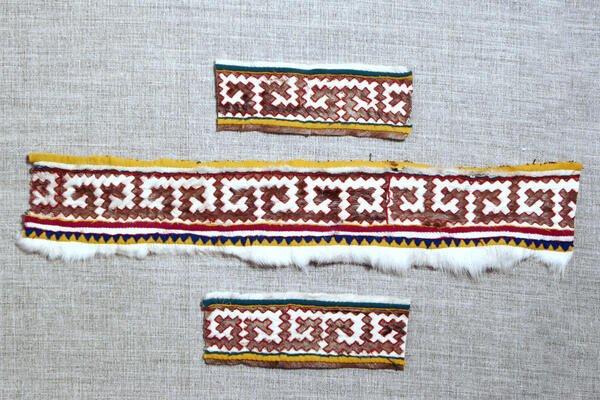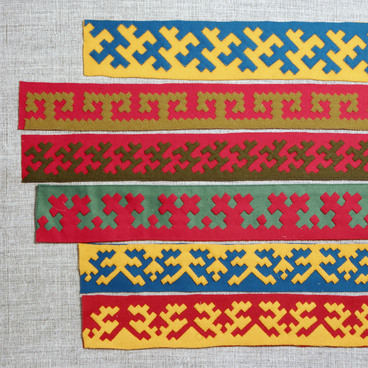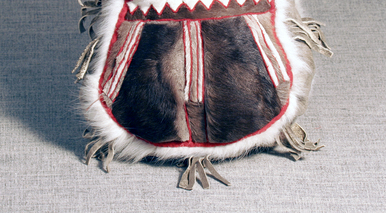One of the main occupations of a Forest Nenets woman is sewing warm clothing and footwear for the whole family. Traditionally only women are involved in this activity, they process reindeer skins, make thread of animals’ tendons, cut out, sew and decorate clothes. The traditional mosaic ornament they use for it reflects clearly this people’s culture, outlook and lifestyle.
Most of the Forest NEnets clothing is tailored of processed reindeer skin and fur, as these strong and warm materials are durable and can protect even during severe frosts. The work is laborious, for instance, it may take more than a year to make a female winter coat, yagUshka. This outfit is usually decorated with cloth or fur, beads and metal details. Fur ornament was one of the earliest among the NEnets.
Aesthetics is achieved through alternating strips of fur of different colors, and for finishing they use edging of colored cloth put between fur details. KAmus, smooth and solid fur taken from reindeer legs of a light or dark tint, is used as a material for the ornament.
The most experienced and skillful dressmakers don’t draft the pattern but cut the ornamental line with a knife straight on the furs. Both parts are equal in shape and mirror one another. It makes a mosaic pattern with whites on blacks and blacks on whites. The composition of this ornament and its contrast express the NEnets’ view on unity and equality of the two basic principles — light and dark, male and female, good and evil, winter and summer. The rhythmic repetition of the elements stands for the cyclical nature of life and a human.
The most commonly known mosaic ornaments used for clothing are ‘reindeer antlers’, ‘hare ears’, ‘birch branches’, ‘fish-drying stands’. The fragments of a reindeer fur ornament displayed in the ethnographical collection of Gubkinsky Museum of the Development of the North and provided to the museum by Khovku Pyak, a Dyanki-Koy camp resident.
Most of the Forest NEnets clothing is tailored of processed reindeer skin and fur, as these strong and warm materials are durable and can protect even during severe frosts. The work is laborious, for instance, it may take more than a year to make a female winter coat, yagUshka. This outfit is usually decorated with cloth or fur, beads and metal details. Fur ornament was one of the earliest among the NEnets.
Aesthetics is achieved through alternating strips of fur of different colors, and for finishing they use edging of colored cloth put between fur details. KAmus, smooth and solid fur taken from reindeer legs of a light or dark tint, is used as a material for the ornament.
The most experienced and skillful dressmakers don’t draft the pattern but cut the ornamental line with a knife straight on the furs. Both parts are equal in shape and mirror one another. It makes a mosaic pattern with whites on blacks and blacks on whites. The composition of this ornament and its contrast express the NEnets’ view on unity and equality of the two basic principles — light and dark, male and female, good and evil, winter and summer. The rhythmic repetition of the elements stands for the cyclical nature of life and a human.
The most commonly known mosaic ornaments used for clothing are ‘reindeer antlers’, ‘hare ears’, ‘birch branches’, ‘fish-drying stands’. The fragments of a reindeer fur ornament displayed in the ethnographical collection of Gubkinsky Museum of the Development of the North and provided to the museum by Khovku Pyak, a Dyanki-Koy camp resident.



